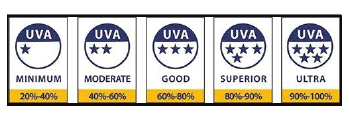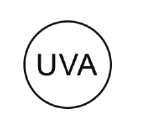By Mark Colton at BWCI
mark.colton@bwcigroup.com
“It is difficult to find a combination of acceptable investments
that suits everyone”
SPF
Whether you favour winter slopes or summer beaches (or both), you’ll be reaching for the sunscreen. The SPF (Sun Protection Factor) is a handy number telling us how strong the stuff is. It is easy to understand too: SPF 30 means that you can stay in the sun 30 times longer, without burning, than without sunscreen.
The burning is caused by ultraviolet light, specifically UVB rays. There are UVA rays too, though, and these cause ageing. Does the SPF number cover these too? No. Is there a separate UVA number? No.
You need a magnifying glass and dogged research to find out what ageing protection there is. (Answers at the end, if you’re interested.)
Labelling
Sunscreen isn’t the only thing that comes with mixed labelling. Step forward, investment funds. These are the engines of long-term saving for retirement. The issues of concern are climate change, ESG (short for Environmental, Social and Governance), and sustainability.
Carbon Intensity
One element that dwarfs the rest is climate change, so clear labelling here is the priority. Fortunately there is a ready measure that captures what is going on. This is the carbon intensity, which measures how much greenhouse gas is being pumped out per $1m of revenue (or capital invested). This means comparison is easy between funds of different sizes. A low number is good, and the trajectory should be towards zero, of course. The gold standard for a fund is an immediate reduction of 50%, relative to the main market, and reducing by 7% each future year thereafter.
ESG spectrum
ESG includes a host of other issues. An investor might say: “I do not want to invest in any sectors like oil [Environmental], arms [Social], or any areas with potential labour/human rights issues [Social].” Of course, any fund which implements these exclusions could still invest in other polluters, tobacco, alcohol and gambling companies, for example. It is difficult to find a combination of acceptable investments that suits everyone.
Consequences
Whilst this means ESG can be complex to implement, there can be serious consequences for ignoring it altogether. For example, The People’s Pension, a major provider in the UK, has recently removed £28bn from State Street for retreating from its ESG commitments.
BWCI’s initiatives
BWCI has a strong focus on climate change, ESG and sustainability in its investment consultancy, the carbon footprint of its business and its initiatives with the Guernsey Association of Pension Providers.
For example, BWCI’s flagship Blue Riband range of pension products recently championed sustainable investment by selecting Legal & General’s Future World funds. These deliver the gold standard on climate change and cover a very wide range of ESG issues. There’s also a clear and simple policy on exclusions; any company on the Future World Protection List is excluded. Those that remain get an ESG score. More money goes to those with a good rating; and less to those that do not.
Clearly there are ways through the ESG maze, and simple measures to understand climate change impact. Getting burnt or prematurely aged by the sun is bad enough, but there is no need to run the same risks with your investment strategy. If you would like to learn more, please contact mark.colton@bwcigroup.com, or your usual BWCI contact.
Here are those UVA answers. A “broad-spectrum” sunscreen will include some UVA protection.
A commonly used measure to quantify the level of protection is based on a star-rating which refers to a PROPORTION of the UVB SPF. 5 stars means that the UVA protection factor is about the same as the UVB one.

 More common on EU products, “UVA” in a circle means UVA protection of at least a third of the UVB SPF. So an SPF of 30 and the circle UVA symbol, means at least a 10-fold UVA protection. Another common label uses “PA” followed by one to four “+” symbols. PA+ means 2x – 4x protection, and every additional “+” doubles the protection. P++++ is the highest rating, indicating UVA protection of 16x or greater.
More common on EU products, “UVA” in a circle means UVA protection of at least a third of the UVB SPF. So an SPF of 30 and the circle UVA symbol, means at least a 10-fold UVA protection. Another common label uses “PA” followed by one to four “+” symbols. PA+ means 2x – 4x protection, and every additional “+” doubles the protection. P++++ is the highest rating, indicating UVA protection of 16x or greater.

